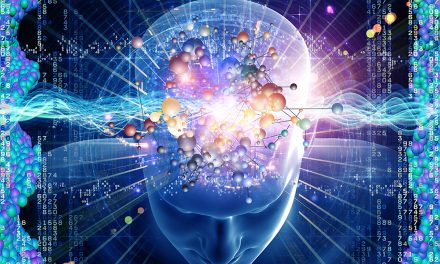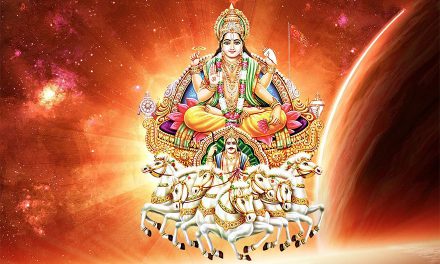The average life span of a human being is negligible when compared to other ages. In other ages the life span of people used to be more and they used to get more time for devoting themselves on the paths of love and duty. During the mythological ages the life span used to extend from Satyug to Dwaparyug. Atri, Anusuya, Agast and Bhardwaj met Lord Shri Rama in the Treta age. Similarly lord Hanuman of Treta age met Bhima in the Dwarpar age. Jambavant also met Shri Krishna. Kuber, Narad and Maya all three played a major role in all the three ages. Lord Krishna says in Gita (7.19):
bahuna janmanam ante jnanavan mam prapadyate
This means, people understand me after devoting themselves for several ages. There are several characters mentioned in mythological stories with reference to this. Shri Ramcharitamanas describes that Manu and Shatroopa’s life extended for 23 thousand years (Balkand: 144 couplets and verses). The Brahmavaivarta mythological story describes Lomesh sage, who lived up to several years to the long age of his sensory organs. Some anecdotes in Shrimadbhagvata have come along with number of years. Naimisharanya describes the rituals performed by sages for One thousand years (Part 1-1 -4). Similarly another reference to Kardam sage has been made which says that he sat in devotion on the banks of Saraswati River for one thousand years. Malaydhwaj also sat in devotion for hundred years. Pracheta, an ancient sage was in devotion for ten thousand years and sage Markandeya was in meditation for crores of years. The actual number of years is not known in the case of some sages who performed devotion but the termite and ant hills built on their body shows that they sat in devotion for several hundreds years, one such instance is about Valmiki. This proves that meditation carried on for several years and hence the anthills and termite hills formed on his body. The names of Valmiki and Chyavan have a special reference in such incidents. This devotion was done to please the God. When the God is pleased all the desires are fulfilled, which give the experience of truth, divine knowledge and salvation. This is the path of knowledge. An atheist gets relieved from the family life and devotes himself for several years and acquires divine knowledge and salvation. This is also known as the path of dedication. Shankaracharya has described dedication in 3-3 of Gita as dedication is that which is done with the sole aim of attaining something, . whose devotion should be done and why? He has described about this in Chandogyopanishad (7.20.1) that dedication is serving the Guru for attaining theological knowledge, nishtha gurushushrushadistatparatvam brahma vijnanam
After establishing the path of knowledge every person should become an atheist. A person cannot acquire knowledge without becoming an atheist. In this context he makes reference to a young atheist Shukdev. An atheist can also not devote himself without food and it is said he should eat fruits, roots or take Bhiksha to satisfy his hunger.
When we consider the path of knowledge to be the only path of dedication then several questions arise in the mind. In the present age, the average life span of a human being is less than 100 years and hence it is possible to devote themselves for hundreds and thousands of years. In this condition the path of knowledge cannot be accomplished. It is also necessary to note that this path is not for everybody and cannot be applied on the whole society in the same manner. If the whole society sacrifices family life and become atheist then who will produce food and who will give bhiksha to the atheist for his survival? How will the atheist attain God if he dies suddenly? Darkness will engulf the whole society, the family, the generations will not move ahead, the nation cannot be protected neither the nature. This proves that the rule of attaining knowledge on the path of atheism is not for the whole society but for few special people. The think tanks following this path have not answered this question and declared that this is the only path for dedication.
Then what is the source of salvation for the whole society? Which is the path, which can be followed by all, which ensures that the social arrangement remains undisturbed, the nation is also protected, the agriculture and industry proceed and everybody gets salvation? This path is the path of action. Shrimad Bhagavad Gita has supported this as well. Gita does not say that path of knowledge is the only way for dedication. It mentions two kinds of dedication (Gita 3.3):
loke ‘smin dvividha nishtha
These two dedications are knowledge and action, action has a deep meaning. Some believe that the work done as per classics is the real work. Other than this are activities, wrong deeds and sins. The common man does not think to this extent. Hence the third dedication free of expectation was mentioned for everybody. Mahabharata has reference to three dedication, mokshe hi trividha nishtha. These dedications are knowledge, hard work and duty without expectation. Brahmasutra (3:4:32-35) contains has also supported the three dedications with verses like, vivihatatva cashram karmnani. Gita has included selfless duty, duty without expectations and duty like yagya under Karmayoga dedication. Had this not be done then Gita’s proofs would have been incomplete and duties would be extended to different divisions and sub-divisions. Two other duties have also been mentioned in the texts they are bhakti and yoga, bhakti and yoga path are based on these two duties. The basis of bhakti path is mythological classics like Shrimadbhagwat and other verses. On deep thinking one can realize that bhakti is seen in the characteristics of knowledge and duty. The nine types of bhakti propounded by sages – listening, devotional songs, memory, serving the god, prayers, worship, service, friendship and self appeal are all possible with action. In this context it is not logical to say that duty of bhakti has different dedication and remaining duties have different dedication. Elsewhere three episodes of deeds have been mentioned – action, worship and knowledge. Among these worship is bhakti. It includes all the deeds of bhakti. In Gita a devotee has been described as a sacrificing man and expert. Expertise is related to deeds and sacrifice is related to the results of deeds. The qualities like sacrificing the company, results, without emotions, satisfied, freedom is same for a devotee and a person who is following the path of action or deeds. Other qualities like free of hatred, jealousy, friendly, compassionate, equality, strong willed, free of happiness, hatred, fear, anxiety, disappointment, enmity, worries, expectations, sacrificing the good and bad things, fame-defame, happiness-unhappiness, aloof from praise and criticism, calm, stable minded etc. are also found in an atheist following the path of knowledge., It is clear that a few characteristics of path of bhakti have been imported into path of deeds or actions and some in the path of knowledge. If they were separated then nothing would remain in the path of bhakti. Great karma yogis have also been included along with hanuman, Dhruva, Prahlad, Narad etc. Therefore it cannot be concluded that they have accomplished devotion and action together. Hence the path of bhakti cannot be treated as a separate dedication.
Gita has not mentioned anywhere that it is a separate dedication. According to Patanjali no path can be accomplished along with the conditions of the mind. Therefore it cannot be said that elimination of the conditions of the mind is applicable only for yoga and that knowledge and action are not for bhakti. If it is said that the complete physical exercise of yoga is for eliminating the conditions of the mind then it is incorrect. The postures mentioned for practicing yoga – aloof, calm, pure, concentration, stability, meditating God are equally important for atheists and devotees. Hence the path of yoga is not different from the path of knowledge. It should not be considered to be separate.
Now two dedications are left in the form of knowledge and action. Who is the receptor among the two? This question was raised in the previous ages as well. A karma yogi Vishvamitra made continuous efforts to becomes a knowledgeable devotee. On the other hand Parashurama was always known to be a Karma yogi. Who is more receptive and accomplished between karma yogi and scholar? In the beginning light was thrown on the path of knowledge and it was found that it is not receptive for the salvation of the whole society. Gautam Buddha and Mahavir sacrificed their social lives and made efforts to take the whole society on the path of non-violence. The society accepted it in the form of atheist. The Kings also started following the path of nonviolence. The foreigners got the inspiration to conquer due to the increasing awareness towards non-violence. Sikandar conquered almost half of India and nobody could stop him.
Gita (4.3) says that yoga of action is the basic dedication. yogah proktah pura-tanah. This is the primary dedication. It has special relevance, it was due to actions that King Janak got accomplishments. Performing actions like yagya does not create bonds and physical actions do not amount to sins. Beginning does not destroy action. Gita mentions another description it says that accepting success and failure in the same spirit is yoga. samatvam yoga ucyate (2.48). Gita considers the above-mentioned third type of dedication and includes it in the dedication of action. It says one should not expect results after doing actions. Can a person doing actions, which are low and sinful get salvation? Yes, they can. A judge giving life sentence and the executioner hanging persons to death will also get salvation. The soldier killing the criminals and sinners will also get salvation because they do perform their duties. Markandeya mythology mentions about an accomplished women who was following family life and obedient wife. A meat seller is also described who sells meat and is his paternal business. Doing your own work is not a sin. Serving parents, taking care of the family, speaking truth, keeping away from criticism, anger, serving the guests and worshiping God are the actions. It says that performing ones duties is the biggest dedication. Chandgyopanishad mentions about a driver Raikva who attained accomplishment while driving. The sages also used to keep cattle and involve in agricultural practices. Saint Kabir, Ravidas were Karma yogis. This proves that the path of actions gives accomplishment and on the other hand security of the society and the nation are also included in the path of action.












